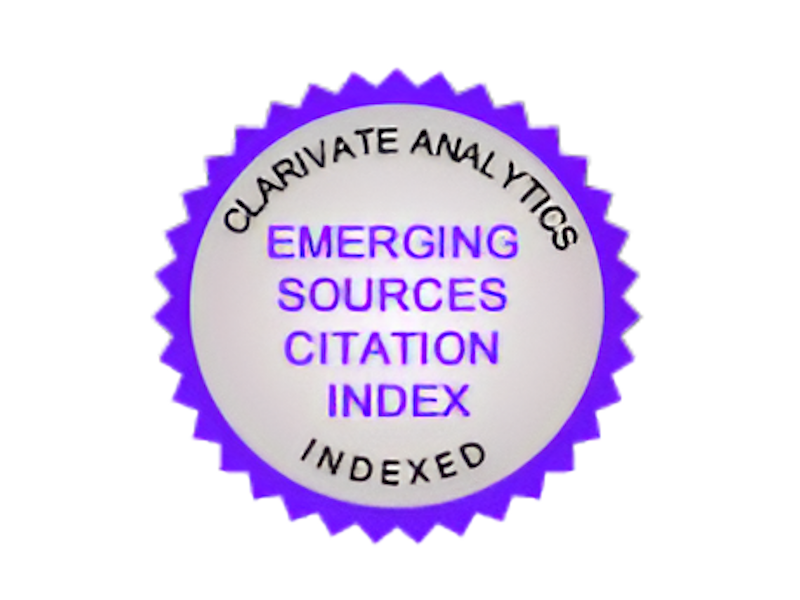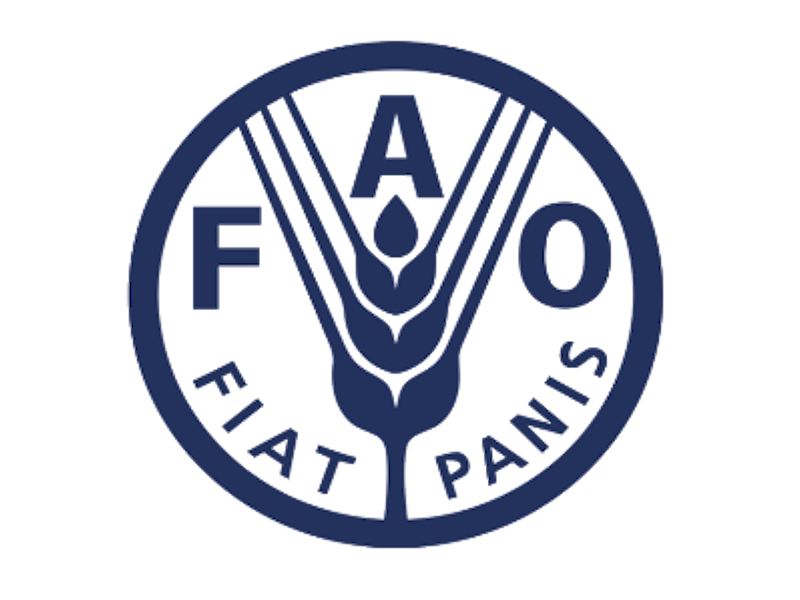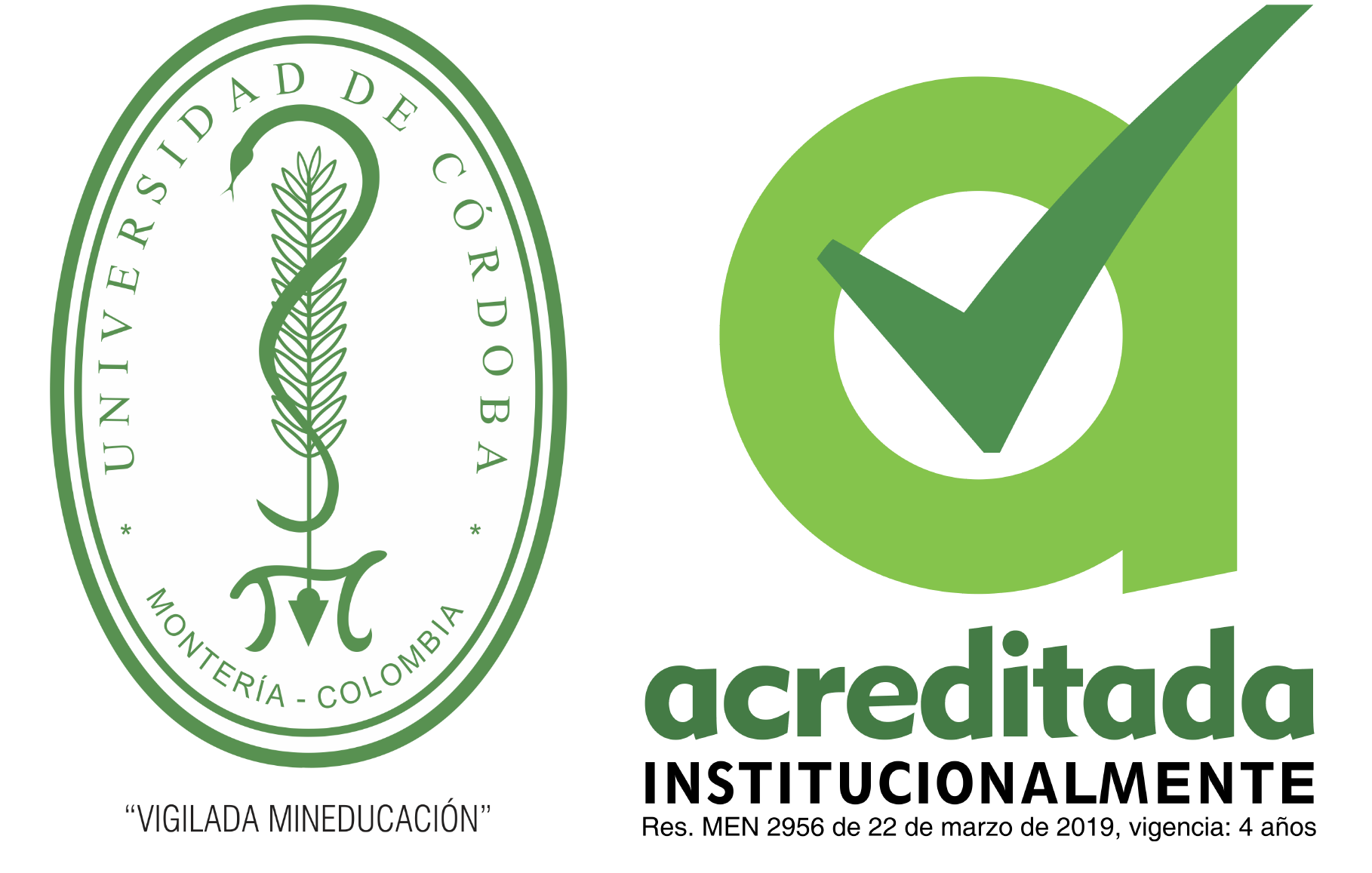Biocontrol de Fusarium spp. en el cultivo de vainilla: Un nuevo modelo de estudio
Biocontrol against Fusarium spp. in vanilla crop: A new study model


Esta obra está bajo una licencia internacional Creative Commons Atribución-NoComercial 4.0.
Mostrar biografía de los autores
El control biológico es una opción potencial y sostenible para tratar las problemáticas de producción y rendimiento de cultivos afectados por insectos o microorganismos patógenos. En el cultivo de vainilla, la obtención del aroma natural presente en sus frutos está limitada, principalmente, por enfermedades bióticas que afectan la planta en cultivo comercial. La principal enfermedad presente el cultivo de vainilla es la pudrición de raíces y tallos, causada por F. oxysporum f. sp. radicis-vanillae y F. oxysporum f. sp. vanillae. En este sentido, se encontró que el uso de hongos endófitos (HE) aislados de plantas sanas o asintomáticas como potenciales agentes de control biológico, requiere una investigación sistemática para la selección de las especies más eficaces en el control de patógenos, en especial es este cultivo. Dado que no hay evidencia de reportes al respecto, a pesar de que el uso de estos microorganismos es una alternativa natural implementada en otros cultivos, frente a los agroquímicos contaminantes y ampliamente usados en la agricultura tradicional. De esta manera, esta revisión aborda la perspectiva y plantea la necesidad de líneas de investigación sobre el uso potencial de hongos endófitos como agentes de control biológico de patógenos fungosos en plantas cultivadas, haciendo énfasis sobre la relación Hongos endófitos-Vanilla- Fusarium patogénico.
Visitas del artículo 441 | Visitas PDF
Descargas
- Abro, M., Sun, X., Li, X., Jatoi, G. y Guo, L. 2019. Biocontrol Potential of Fungal Endophytes against Fusarium oxysporum f. sp. cucumerinum causing Wilt in Cucumber. Plant Pathol. J. 35(6), 598-608. https://doi.org/10.5423/PPJ.OA.05.2019.0129
- Adame-García, J., Rodríguez, G, Iglesias, A., Ramos, P. y Luna, R. 2015a. Molecular identification and pathogenic variation of Fusarium species isolated from Vanilla planifolia in Papantla Mexico. Bot. Sci. 93, 669–678. https://doi.org/10.17129/bots-ci.142
- Adame-García, J., Luna-Rodríguez, M. y Iglesias-Andreu, L. 2015b. Vanilla Rhizobacteria as Antagonists against Fusarium oxysporum f. sp. vanillae. Int. J. Agric. Biol., 18(1). https://doi.org/10.17957/IJAB/15.0053
- Adeleke, B., Ayilara, M., Akinola, S. y Babalola, O. 2022. Biocontrol Mechanisms of endophytic fungi. Egyptian Journal of Biological Pest Control. 32:46. https://doi.org/10.1186/s41938-022-00547-1
- Ahmad, H., Ahmad, R., Asif, M., Adnan, M. y Idrees, M. 2020. Vanilla. In: Asif, M., Nawaz, H., Mumtaz, M., Byrne, M., (Eds.) Medicinal Plants of South Asia. Elsevier. 657-669. ISBN 9780081026595. https://doi.org/10.1016/B978-0-08-102659-5.00048-3
- Alabouvette, C., Olivain, C., Migheli, Q. y Steinberg, C. 2009. Microbiological control of soil-borne phytopathogenic fungi with special emphasis on wilt-inducing Fusarium oxysporum. New Phytol. 184, 529-544. https://doi.org/10.1111/j.1469-8137.2009.03014.x
- Alomía, Y., Tupac-Otero, J. y Jersáková, J., Stevenson, P. 2022. Cultivable fungal community associated with the tropical orchid Dichaea andina. Fugal Ecol. 57- 58:101158. https://doi.org/10.1016/j.funeco.2022.101158
- Arnold, E., Mejía, L., Kyllo D., Rojas, E., Maynard, Z., Robbins, N. y Herre, E. 2003. Fungal Endophytes limit pathogen damage in a tropical tree. PNAS. 100(26), 15649-15654.
- Barolo, M., Castelli, M. y López, S. 2023. Antimicrobial properties and biotransformating ability of fungal endophytes from Ficus carica L. (Moraceae). Mycology. 1-24. https://doi.org/10.1080/21501203.2023.217550
- Barrera-Necha, L. y García-Barrera, L. 2008. Antifungal activity of essential oils and their compounds on the growth of Fusarium sp. Isolate from papaya (Carica papaya). Rev. UDO. Agric. 8(1), 33-41. https://dialnet.unirioja.es/servlet/articulo?codigo=3094829
- Bayman, P., Mosquera-Espinosa, A., Saladini-Aponte, C., Hurtado-Guevara, N. y Viera-Ruiz, N. 2016. Agede pendent mycorrhizal specificity in an invasive orchid, Oeceoclades macu- lata. Am. J. Bot. 103(11). 1880-1889. https://doi.org/10.3732/ajb.1600127
- Bayman, P. 2019. The History of Vanilla in Puerto Rico: Diversity, Rise, Fall, and Future Prospects. In: Havkin-Frenkel, D., Belanger, F. (Eds.) Handbook of Vanilla Science and Technology, 2nd Edition. Wiley Blackwell. pp. 111-118
- Bhai, R. y Dhanesh, J. 2008. Occurrence of fungal diseases in vanilla (Vanilla planifolia Andrews) in Kerala. J. Spices. Aromat. Crops. 17: 140–148. https://updatepublishing.com/journal/index.php/josac/article/view/4907
- Bhai, S., Remya, B., Danesh, J. y Eapen, S. 2009. In vitro and in planta assays for biological control of Fusarium root rot disease of Vanilla. J. Biol. Control. 23(1), 83-86. https://doi.org/10.18311/JBC/2009/3621
- Bordolla-Pérez, V., Iglesias-Andreu, L., Herrera-Cabrera, B. y Vovides-Papalouka, A. 2016. Aborción prematura de frutos de Vanilla planifolia Jack. Ex Andrews. Agro- Productividad. 9(S1). https://revista-agro-productividad.org/index.php/agroproducti-vidad/article/view/873
- Casillas-Isiordia, R., Flores-de la Rosa, F., Can-Chulim, A., Luna, E., Rodríguez-Guerra, R., Ramírez-Guerrero, L. y Luna-Rodríguez, M. 2017. Fusarium sp. associated with Vanilla sp. rot in Nayarit, Mexico. ARPN J. Agric. Biol. Sci. 12(2), 43-50. http://dspace.uan.mx:8080/jspui/handle/123456789/2207
- Carbajal-Valenzuela, I., Muñóz-Sanchez, A., Hernández-Hernández, J. Barona-Gómez, F., Truong, C. y Cibrián-Jaramillo, A. 2022. Microbial Diversity in Cultivated and Feral Vanilla Vanilla planifolia Orchids Affected by Stem and Rot Disease. Microb Ecol 84, 821–833. https://doi.org/10.1007/s00248-021-01876-8
- Card, S., Johnson, L., Teasdale, S. y Caradus, J. 2016. Deciphering endophyte behaviour: the link between endophyte biology and efficacious biological control agents. FEMS Microbiol Ecol. 92, fiw114. https://doi.org/10.1093/femsec/fiw114
- Chowdhary, K. y Kaushik, N. 2018. Biodiversity study and potential of fungal endophytes of peppermint and effect of their extract on chickpea rot pathogens. Arch. Phytopathol. Pflanzenschutz. 51, 139-155. https://doi.org/10.1080/03235408.2018.14 40707
- De Almeida, A., Concas, J., Campos, M., Materatski, P., Varanda, C., Patanita, M., Murolo, S., Romanazzi, G. y Do Rosario, M. 2020. Endophytic Fungi as PotentialBiological Control Agents against Grapevine Trunk Diseases in Alentejo Region. Biology. 9(12), 420. https://doi.org/10.3390/biology9120420
- De Silva, N., Brooks, S., Lumyong, S. y Hyde, K. 2019. Use of endophytes as biocontrol agents. Fungal Biol. Rev. 33, 133-148. https://doi.org/10.1016/j.fbr.2018.10.001
- Eke, P., Adamou, S., Fokom, R., Dinango, V., Tsouh, P., Wakam, L., Nwaga, D. y Fekam, F. 2020. Arbuscular mycorrhizal fungi alter antifungal potential of lemon- grass essential oil against Fusarium solani, causing root rot in common bean (Phaseolus vulgaris L.). Heliyon. 6: e05737. https://doi.org/10.1016/j.heliyon.2020.e05737
- Flanagan, N. y Mosquera-Espinosa, A. 2016. An integrated strategy for the conservation and sustainable use of native Vanilla species in Colombia. Lankesteriana. 16(2), 201–218. https://doi.org/10.15517/lank.v16i2.26007
- Flores-de la Rosa, F., De Luna, E., Adame-García, J., Iglesias-Andreu, L. y Luna-Rodríguez, M. 2018. Phylogenetic position and nucleotide diversity of Fusarium oxysporum f. sp. vanillae worldwide based on translation elongation factor 1α sequences. Plant Pathol. 67(6): 1278 – 1285. https://doi.org/10.1111/ppa.12847
- Food and Agriculture Organization Data (FAOSTAT). 2022. Vanilla Production. https://www.fao.org/faostat/en/#data
- Gamboa, M. y Bayman, P. 2001. Communities of Endophytic Fungi in leaves of a Tropical Timber Tree (Guarea guidonia: Meliaceae). Biotropica. 33(2), 352-360. https://www.jstor.org/stable/266384
- Gangadara, N., Saifulla, N., Najaraja, R. y Basavaraja, M. 2010. Biological control of Fusarium oxysporum f. sp. vanillae, the causal agent of stem rot of Vanilla in vitro. IJSN. 1(2), 259-261. ISSN 2229-6441
- Ge, A., Liang, Z., Xiao, J., Zhang, Y., Zeng, Q., Xiong, C., Han, L.,Wang, J. y Zhang, L. 2021. Microbial assembly and association network in watermelon rhizosphere after soil fumigation for Fusariumwilt control. Agric. Ecosyst. Environ. 312, 107336.http://doi.org/10.1016/j.agee.2021.107336
- Grisoni, M. y Nany, F. 2021. The beautiful hills: half a century of vanilla (Vanilla planifolia Jacks. ex Andrews) breeding in Madagascar. Genet Resour Crop Evol 68, 1691–1708. https://doi.org/10.1007/ s10722-021-01119-2
- Hernández, J., Quintana, F. y Nava, H. 2018. Monitoring and analyzing environmental factors favoring outbreaks of Fusarium oxysporum f. Sp. vanillaein a vanilla shade house. Int. J. Agric. Biol. 11(1): 58 – 65. https://doi.org/10.25165/j.ijabe.20181101.2803
- Hernández-Hernández, J. 2019. Vanilla Diseases. In: Havkin-Frenkel, D. y Belanger,F. (Eds.) Handbook of Vanilla Science and Technology, 2nd Edition. Wiley Blackwell. pp. 27-39
- Hernández-Hernández, J. 2014. Técnicas implementadas para el cultivo de vainilla en México. In: Araya, C., Cordero, R., Paniagua, A., Azofeifa, J. (Eds.). I Seminario Internacional de Vainilla. Promoviendo la investigación, la extensión y la producción de vainilla en Mesoamérica. pp. 81-92
- Horinouchi, H., Muslim, A. y Hyakumachi, M. 2010. Biocontrol of Fusarium wilt of spinach by the plant growth promoting fungus Fusarium equiseti GF183. J Plant Pathol. 92(1), 249-254. https://www.jstor.org/stable/41998793
- Huang, L., Niu, Y., Su, L., Deng, H. y Lyu, H. 2020. The potential of endophytic fungi isolated from cucurbit plants for biocontrol of soilborne fungal diseases of cucumber. Microbiol Res. 231, 126396. https://doi.org/10.1016/j.micres.2019.126369
- Jayasekhar, M., Manonmani, K., Justin, C. y Gailce, L. 2008. Development of integrated biocontrol strategy for the management of stem rot disease (Fusarium oxysporum f. sp. vanillae) of Vanilla. Agricultural Science Digest. 28(2), 109-111. https://arccjournals.com/journal/agricultural-science-digest/ARCC2554
- Kadir, N., Naher, L., Kayat, F., Sidek, N., Zain, N. y Bakar, T. 2021. Morphological and molecular identification of Fusarium spp. and Colletotrichum spp. isolated from infected vanilla orchid. Malays. J. Microbiol. 17(1): 42-51. http://dx.doi.org/10.21161/mjm.200846
- Foullaud, M., Verpoorte, R. y Kodja, H. 2015. Fungal endophytes of Vanilla across Réunion Island: isolation, distribution and biotransformation. BMC Plant Biol. 15,142. https://doi.org/10.1186/s12870-015-0522-5
- Koyyappurath, S., Conéjero, G., Dijoux, J., LApeyre-Montés, F., Jade, K., Chiro- leu, F., Verdeil, J., Besse, P. y Grisoni, M. 2015. Differential responses of Vanilla Accessions to Root Rot and Colonization by Fusarium oxysporum f. sp. radicis. vanillae. Front. Plant Sci. 6:1125. https://doi.org/10.3389/fpls.2015.01125
- Koyyappurath, S., Atuahiva, T., Le Guen, R., Batina, H., Le Squin, S., Gautheron, N., Edel Hermann, V., Peribe, J., Jahiel, M., Steinberg, C., Liew, E., Alabouvette, C., Besse, P., Dron, M., Sache, I., Laval, V. y Grisoni, M. 2016. Fusarium oxysporum f. sp. radicis-vanillae is the causal agent of root and stem rot of Vanilla. Plant Pathol. 65,612-625. https://doi.org/10.1111/ppa.12445
- Latz, M., Jensen, B., Collinge, D. y Jørgensen, H. 2018. Endophytic fungi as biocontrol agents: Elucidating mechanisms in disease suppression. Plant Ecol Divers 11:555–567. https://doi.org/10.1080/17550874.2018.1534146
- Li, H., Yan, C., Tang, Y., Ma, X., Chen, Y., Chen, S., Lin, M. y Liu, Z. 2020a. Endophytic bacterial and fungal microbiota in different cultivars of cassava (Manihot esculenta Crantz). J Microbiol. 58, 614–623. https://doi.org/10.1007/s12275-020-9565-x
- Li, Z., Ma, L., Zhang, Y., Zhao, W., Zhao, B. y Zhang, J. 2020b. Effect of wheat cultivars with different resistance to Fusarium graminearum abundance and microbial community composition. Plant Soil. 448:383-397. https://doi.org/10.1007/s11104-020-04441-3
- Li, W. y Liu, Q. 2019. Changes in fungal community and diversity in strawberry rhizosphere soil after 12 years in the greenhouse. Journal of Integrative Agriculture. 18(3): 677-687. https://doi.org/10.1016/S2095-3119(18)62003-9
- Manosalva-Estepa, J. y Mosquera-Espinosa, A. 2014. Enfermedades fungosas en Uchuva (Physalis peruviana) y evaluación in vitro de hongos endófitos con actividad biocontroladora. Rev. Fito. Colomb. 38(1), 1-8
- Marín-Montoya, M., Santa-Cardona, C. y Díez, M. 2012. Identification of the causal agent of vanilla basal stem rot in crops under greenhouse shed conditions from Colombia. Rev. Mex. Mic. 35, 23-34. https://www.scielo.org.mx/scielo.php?pi- d=S0187-31802012000100004&script=s-ci_abstract&tlng=en
- Montes de Oca-Vásquez, G.M., Solano-Campos, F., Azofeifa- Bolaños, B., Paniagua-Vásquez, A., Vega- Baudrit, J., Ruiz-Navarro, A., López- Mondéjar, R. y Bastida, F. 2020. Microhabitat heterogeneity associated with Vanillaspp. and its influences on the microbial community of leaf litter and soil. Soil Ecol. Lett. 2, 195–208. https://doi.org/10.1007/s42832-020-0041-7
- Mosquera-Espinosa, A., Bonilla-Monar, A., Flanagan, N. ,Rivas, Á., Sánchez, F., Chavarriaga, P., Bedoya, A. y Riascos-Ortiz, D. 2022. In Vitro Evaluation of the Development of Fusarium in Vanilla Accessions. Agronomy. 12, 2831. https://doi.org/10.3390/agronomy12112831
- Mosquera-Espinosa, A., Bayman, P., Prado, G., Gómez-Carabali, A. y Tupac, J. 2013. The double life of Ceratoabasidium: orchid mycorryzal fungi and their potential for biocontrol of Rhizoctonia sonani sheath blight of rice. Mycologia. 105(1), 141–150. https://doi.org/10.3852/12-079
- Muchem, M. y Yemata, G. 2022. Epidemio- logy and pathogenicity of vascular wilt of chickpea (Cicer arietinum L.) caused by Fusarium oxyporum f.sp. ciceris, and the host defense responses. S. Afr. J. Bot. 151:339-348. https://doi.org/10.1016/j.sajb.2022.10.008
- Murphy, B., Jadwiszczak, M., Soldi, E. y Hodkindson, T. 2018. Endophytes from the crop wild relative Hordeum secalinum L. improve agronomic traits in unstressed and salt-stressed barley. 4, 1548195. https://doi.org/10.1080/23311932.2018.1549195
- Nguyen, M., Yong, J., Sung, H. y Lee, J. 2020. Screening of Endophytic Fungal Isolates Against Raffaelea quercus- mongolicae Causing Oak Wilt Disease in Korea. Mycobiology. 48, 484-494. https:// doi.org/10.1080/12298093.2020.1830486
- Novotná, A., Benítez, Á., Herrera, P., Cruz, D., Filipczyková, E. y Suárez, J. 2018. High diversity of root-associated fungi iso- lated from three epiphytic orchids in southern Ecuador. Mycoscience. 59:24-32. https://doi.org/10.1016/j.myc.2017.07.007
- Olatunde, A., Mohammed, A., Ibrahim, M., Tajuddeen, N. y Shuaibu, M. 2022. Vainillin: A food additive with multiple biological activities. Eur. J. Med. Chem. 5: 10055. https://doi.org/10.1016/j.ejmcr.2022.100055
- Olantinwo, R., So, C. y Eberhardt, T. 2019. Effect of Acaromyces Ingoldii Secondary Metabolites on the Growth of Brown-Rot (Gloeophyllum Trabeum) and White-Rot (Trametes Versicolor) Fungi. 47, 506-511. Mycobiology. https://doi.org/10.1080/12298093.2019.1686944
- Ordoñez, N., Otero, T. y Díez, C. 2012. Hongos endófitos de orquídeas y su efecto sobre el crecimiento de Vanilla planifolia Andrews. Acta Agron. 61(3), 282-290. http://www.scielo. org.co/scielo.php?script=sci_art tex-t pid= S 0120- 28122012000300010
- Peters, L., Prado, L., Silva, F., Souza, F. y Carvalho, C. 2020. Selection of endophytes as antagonists of Colletotrichum gloesporioides in acai palm. Biol. Control. 150:104350. https://doi.org/10.1016/j.biocontrol.2020.104350
- Pinaria, A., Liew, E. y Burgess, L. 2010. Fusarium species associated with vanilla stem rot in Indonesia. Australas Pl. Pathol. 39, 176–183. https://doi.org/10.1071/AP09079
- Pinaria, A., Laurence, M., Burgess, L. y Liew, E. 2015. Phylogeny and origin of Fusarium oxysporum f. sp. vanillae in Indonesia. Plant Pathol. 64, 1358-1465. https://doi.org/10.1111/ppa.12365
- Porras-Alfaro, A. y Bayman, P. 2011. Hidden Fungi, Emergent Properties: Endophytes and Microbiomes. Annu Rev Phytopathol. 49, 291–315. https://doi.org/10.1146/annurev-phyto-080508-081831
- Radjacommare, R., Venkatesan, S. y Samiyappan, R. 2010. Biological control of phytopathogenic fungi of vanilla through lytic action of Thichoderma species and Pseudomonas fluorescens. Arch. Phyto- pathol. Pflanzenschutz. 43(1), 1-17. https://doi.org/10.1080/03235400701650494
- Ramírez-Mosqueda, M., Iglesias-Andreu, L., Luna-Rodríguez, M. y Castro-Luna, A. 2015.In vitro phytotoxicity of culture filtrates of Fusarium oxysporum f. sp. vanillae in Vanilla planifolia Jacks. Sci Hortic. 197, 573–578. https://doi.org/10.1016/j.scienta.2015.10.019
- Ramírez-Mosqueda, M., Iglesias-Andreu, L., Noa-Carrazana, J. y Armas-Silva, A. 2018. Selection of Vanilla planifolia Jacks. ex Andrews genotypes resistant to Fusarium oxysporum f. sp. vanillae, by biotechnology.Rev.Agro.Prod.11(3),70-74. https://revista-agroproductividad.org/index.php/agroproductividad/article/view/219
- Ramírez-Mosqueda, M., Iglesias-Andreu, L., Telxeira da Silva, J., Luna-Rodríguez, M., Noa-Carrazana, J., Bautista-Aguilar, J., Leyva-Ovalle, O. y Murguía-González, J. 2019. In vitro selection of vanilla plants resistant to Fusarium oxysporum f. sp. vanilla. Acta Physiol. Plant. 41, 40. https:// doi.org/10.1007/s11738-019-2832-y
- Ramos-Quintana, F., Bautista-Hernández, A. y Sotelo-Nava, H. 2017. Relationship between temperature and relative humidity with the outbreak of the fungus Fusarium oxysporum f. sp. vanillae Rev. Mex. Cien Agr. 8(3), 713-720. https://doi.org/10.29312/remexca.v8i3.44
- Ratankumar, A., Sharma, S., Behere, G., Akoijam, R., Singh, Y., Thokchom, S. y Nongtdu, E. 2022. First report of Fusarium oxysporum causing damping-off of tree bean (Parkia timoriana) seedlings in Northeastern India. Crop Protection. 155:105935. https://doi.org/10.1016/j.cropro.2022.105935
- Rather, R., Srinivasan, V. y Anwar, M. 2018. Seasonal deviation effects foliar endophyte assemblage and diversity in Asparagus racemosus and Hemidesmus indicus. BMC Ecol 18, 52. https://doi.org/10.1186/ s12898-018-0211-y
- Rodriguez, R., White Jr, J., Arnold, A. y Redman, A. 2009. Fungal endophytes: diversity and functional roles. New phytologist. 182(2), 314-330. https://doi.org/10.1111/j.1469-8137.2009.02773.x
- Rojas, E., Jensen, B., Jorgensen, H., Latz, M., Esteban, P., Ding, Y. y Collinge, D. 2020a. Selection of fungal endophytes with biocontrol potential against Fusarium head blight in wheat. Biol Control. 144, 104-222. https://doi.org/10.1016/j.biocontrol.2020.104222
- Rojas, E., Sapkota, R., Jensen, B., Jorgensen, H., Henriksson, T., Jorgensen, L., Nicolaisen, M. y Collinge, D. 2020b. Fusarium Head Blight Modifies Fungal Endophytic Communities During In- fection of Wheat Spikes. Microb. Ecol. 79, 397-408. https://doi.org/10.1007/s00248-019-01426-3
- Romero-Cortes, T., Pérez, V., López, P., Rodríguez-Jimenes, G., Robles-Olvera, V. y Aparicio, J. 2019. Antifungal activity of vanilla juice and vanillin against Alterna- ria alternata. CYTA–Journal of Food. 17, (1): 375–383. https://doi.org/10.1080/19476337.2019.1586776
- Sandheep, A., Asok, A. y Jisha, M. 2012. Biocontrol of Fusarium wilt of vanilla (Vanilla planifolia) using combined inoculation of Trichoderma sp. and Pseudomonas sp. Int. J. Pharma Bio Sci. 3(3), 706 – 716. https://doi.org/10.3923/pjbs.2013.580.584
- Sarsaiya, S., Shi, J. y Chen, J. 2019. A comprehensive review on fungal endophytes and its dynamics on Orchidaceae plants: current research, challenges, and future possibilities. Bioengineered. 10(1), 316-334. https://doi.org/10.1080/21655979.2019.1644854
- Scott, M., Rani, M., Samsatly, J., Charron,J. y Jabaji, S. 2018. Endophytes of industrial hemp (Cannabis sativa L.) cultivars: identification of culturable bacteria and fungi in leaves, petioles, and seeds. Can J Microbiol. 64(10):664-680. https://doi.org/10.1139/cjm-2018-0108
- Shahrtash, M. y Brown, S. 2023. Interactions between fungal endophytes and pathogens isolated from the invasive plant kudzu (Pueraria montana var. lobata). Arch. Phytopathol. Pflanzenschutz. 56, 87-107. https://doi.org/10.1080/03235408.2023.2178055
- Sharma, P. 2022. Biocontrol strategies retrospect and prospects. Indian Phytopathol. https://doi.org/10.1007/s42360-023-00601-4
- Sharma, S., Gupta, S., Dhar, M. y Kaul, S. 2018. Diversity and Bioactive Potential of Culturable Fungal Endophytes of Medicinal Shrub Berberis aristata DC.: A First Report. Mycobiology. 46, 370-381.https://doi.org/1 0.1080/12298093.2018.1538068
- Silva, R., Neto, W., Oliveira, R., Bezerra, J., Bezerra, J., De Lima, V., Vieira, L., Tobosa, J., Souza-Motta, C. y Silva, G. 2023. Effect of climate and phenological stage on fungal endophytes community on Sorghum bicolor leaves. Mycol. Prog. 22,19.
- Solano-De la Cruz, M.T., Adame-García, J., Gregorio-Jorge, J., Jiménez-Jacinto, V., Vega-Alvarado, L., Iglesias-Andreu, L., Escobar-Hernández, E. y Luna-Rodríguez, M. 2019. Functional categorization of de novo transcriptome assembly of Vanilla planifolia Jacks. potentially points to a translational regulation during early stages of infection by Fusarium oxysporum f. sp. vanillae. BMC Genomics. 20, 826. https://doi.org/10.1186/s12864-019-6229-5
- Soleha, S., Muslim, A., Suwandi, S., Kadir, S. y Pratama, R. 2022. The identification and pathogenicity of Fusarium oxysporum causing acacia seedling wilt disease. J. For. Res. 33, 711–719. https://doi.org/10.1007/s11676-021-01355-3
- Soto-Arenas, M. y Dressler, R. 2004. Vanilla. In: Hammel, B., Grayum, M., Herrera C., Zamora, N. (Eds.) Manual de Plantas de Costa Rica, III, Monocotiledónea (Orchidaceae-Zingiberaceae). Missouri Botanical Garden, -INBio-Museo Nacional de Costa Rica. pp. 383-387
- Srivastava, S., Kadooka, C. y Uchida, J. 2018. Fusarium species as pathogen on orchids. Microbiol Res. 207, 188-195. https://doi.org/10.1016/j.mi-cres.2017.12.002
- Suryanarayanan, T., Rajulu, G. y Vidal, S. 2016. Biological control through fungal endophytes: Gaps in knowledge hindering success. Curr. Biotecnol. 5(3), 1-14. https://doi.org/10.2174/2211550105666160504130322
- Talapatra, K., Roy, A., Saha, A. y Das, P. 2017. In vitro antagonistic activity of a root endophytic fungus towards plant pathogenic fungi. J. appl. Biol. Biotech- nol. 5(2), 68-71. https://doi.org/10.7324/JABB.2017.50210
- Talukdar, R. y Tayung, K. 2021. Endophytic fungal assemblages of Zanthoxylum oxyphyllum and their antimicrobial potential. Plant Science Today. 8(1):132–139. hhttps://doi.org/10.14719/pst.2021.8.1.979
- Villamizar-Gallardo, R., Ortiz-Rodríguez, O. y Escobar, J. 2017. Symbiotic and endophytic fungi as biocontrols against cocoa (Theobroma cacao L.) phytopathogens. Summa Phytopathol. 43(2), 87-93. https://doi.org/10.1590/0100-5405/2175
- Villavicencio-Vásquez, M., Espinosa- Lozano, R., Pérez-Martínez, S. y Sosa del Castillo, D. 2018. Foliar endophyte fungi as candidate for biocontrol against Moniliophthora spp. of Theobroma cacao (Malvaceae) in Ecuador. Acta. Biol. Col. 23(3), 235-241. https://doi.org/10.15446/abc.v23n3.69455
- White, J., Torres, M., Sullivan, R., Jabbour, R., Chen, Q., Tadych, M., Irizarry, I., Bergen, M., Havkin-Frenkel, D. y Belanger, F. 2014. Microscopy Research and Technique: Ocurrence of Bacillus amyloliquefaciens as a Systemic En- dophyte of Vanilla Orchids. Microsc. Res. Techniq. 77(11), 874-885. https://doi.org/10.1002/jemt.22410
- Wilson, D. 1995. Endophyte: The Evolution of a Term, and Clarification of Its Use and Definition. Oikos. 73(2), 274-276. https://doi.org/10.2307/3545919
- Wu, Z., Su, Q., Cui, Y. He, H., Wnag, J., Zhang, Y., Zhao, Y., Abul, H., Yang, Y. y Long, Y, 2020. Temporal and spatial pattern of endophytic fungi diversity of Camellia sinensis (cv. Shu Cha Zao). BMC Microbiol 20, 270. https://doi.org/10.1186/s12866-020-01941-1
- Wu, AL., Jiao, XY., Fan, FF., Wang, JS., Guo, J., Dong, EW., Wang, LG. y Shen, XM. 2019. Effect of continuous sorghum cropping on the rhizosphere microbialcommunityand the role of Bacillus amyloliquefaciens in altering the microbial composition. Plant Growth Regul. 89, 299–308.https://doi.org/10.1007/s10725-019-00533-y
- Xiong, W., Li, R., Ren, Y., Liu, C., Zhao, Q., Wu, H., Jousset, A. y Shen, Q. 2017. Distinct roles for soil fungal and bacterial communities associated with the suppres- sion of vanilla Fusarium wilt disease. Soil Biol. Biochem. 107, 198–207. https://doi.org/10.1016/j.soilbio.2017.01.010
- Xiong, W., Zhao, Q., Xue, C., Xun, W., Zhao, J., Wu, H., Li, R. y Shen, Q. 2016. Comparison of Fungal Community in Black Pepper-Vanilla and Vanilla Monoculture Systems Associated with Vanilla Fusarium Wilt Disease. Front. Microbiol. 7:117. http//doi.org/10.3389/fmicb.2016.00117
- Xiong, W., Zhao, Q., Zhao, J., Xun, W., Li, R., Zhang, R. y Shen, Q. 2015. Different Continuous Cropping Spans Significantly Affect Microbial Commu- nity Membership and Structure in a Vanilla-Grown Soil as Revealed by Deep Pyrosequencing. Microb. Ecol. 70(1): 209–218. https://doi.org/10.1007/s00248-014-0516-0
- Yang, J., Ren, X., Liu, M., Fan, P., Ruan,P., Zhao, Y., Wang, B. y Li, R. 2022. Suppressing soil-borne Fusarium pathogens of bananas by planting different cultivars of pineapples, with comparisons of the resulting bacterial and fungal communities. Appl. Soil. Ecol. 169:104211. https://doi.org/10.1016/j.apsoil.2021.104211
- Yu, J., Wu, Y., He, Z., Li, M., Zhu, K. y Gao, B. 2018. Diversity and antifungal activity of endophytic fungi associated with Camellia oleifera. Mycobiology. 46, 85-91. https://doi.org/10.1080/12298093.2018.1454008
- Zhang, Y., Tian, C., Xiao, J., Wei, L., Tian, Y. y Liang, Z. 2020. Soil inoculation of Trichoderma asperellum M45a regulates rhizosphere microbes and triggers watermelon resistance to Fusarium wilt. AMB Expr. 10, 189.https://doi.org/10.1186/s13568-020-01126-z
- Zhang, Y., Yu, X., Zhang, W., Lang, D., Zhang, X., Cui, G. y Zhang, X. 2019. Interactions between Endophytes and Plants: Beneficial Effect of Endophytes to Ameliorate Biotic and Abiotic Stresses in Plants. J. Plant Biol. 62, 1–13. https://doi.org/10.1007/s12374-018-0274-5
- Zhao, Q., Wang, H. y Wang, H. 2012. Effects of planting period on vanilla physiological indices and rhizosphere soil microbial community structure. Chin J Trop Crop. 33:1562–1567



















